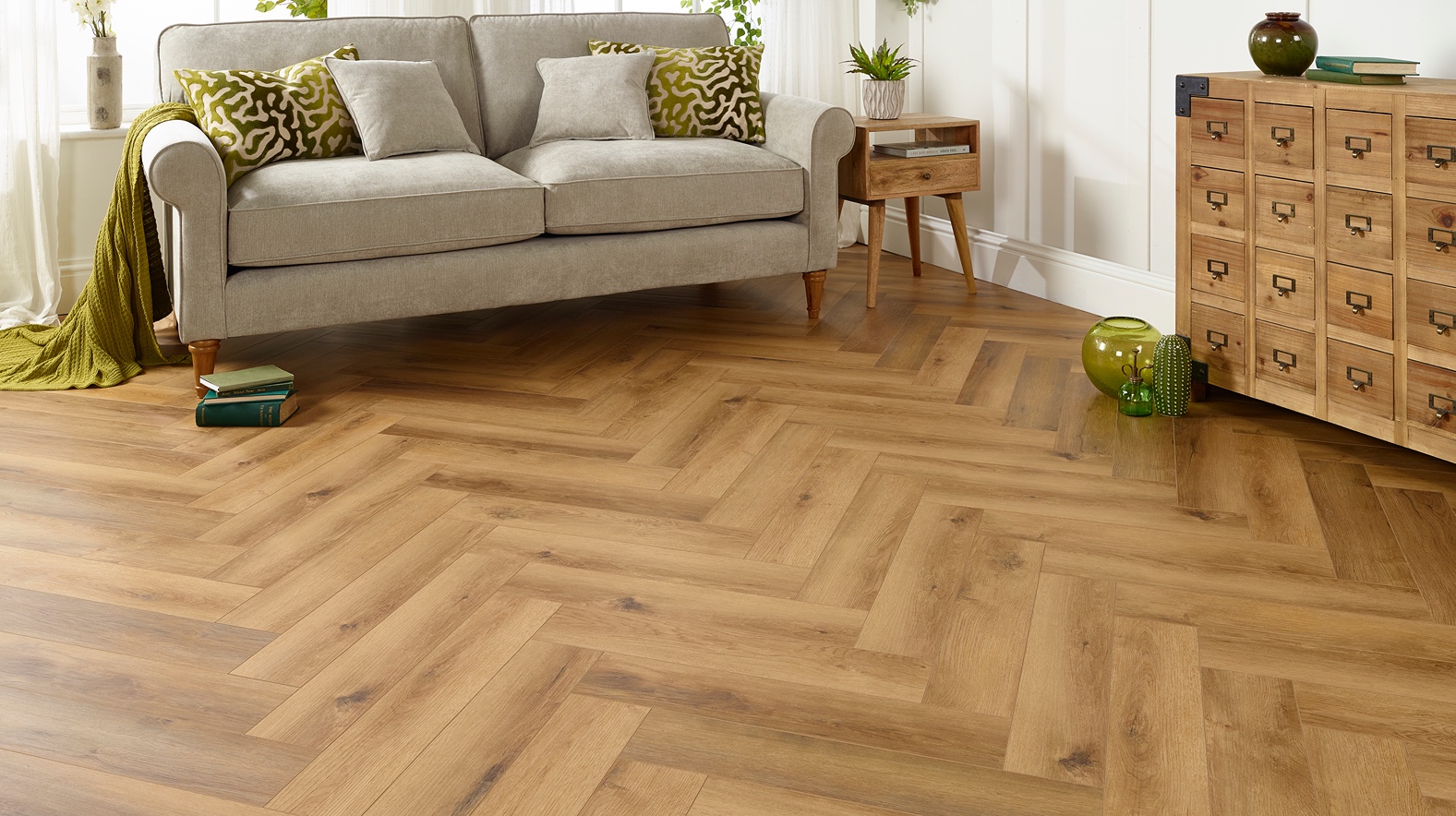
The 7 Vinyl Flooring Trends for 2025
Vinyl flooring is getting better, giving people stylish and strong choices for their homes. Here are the main trends for vinyl flooring in 2025:
1. Wide Plank Vinyl Flooring
Wide planks make rooms look bigger and more fancy. This trend shows off the natural look of wood-style vinyl, giving a modern and classic feel.
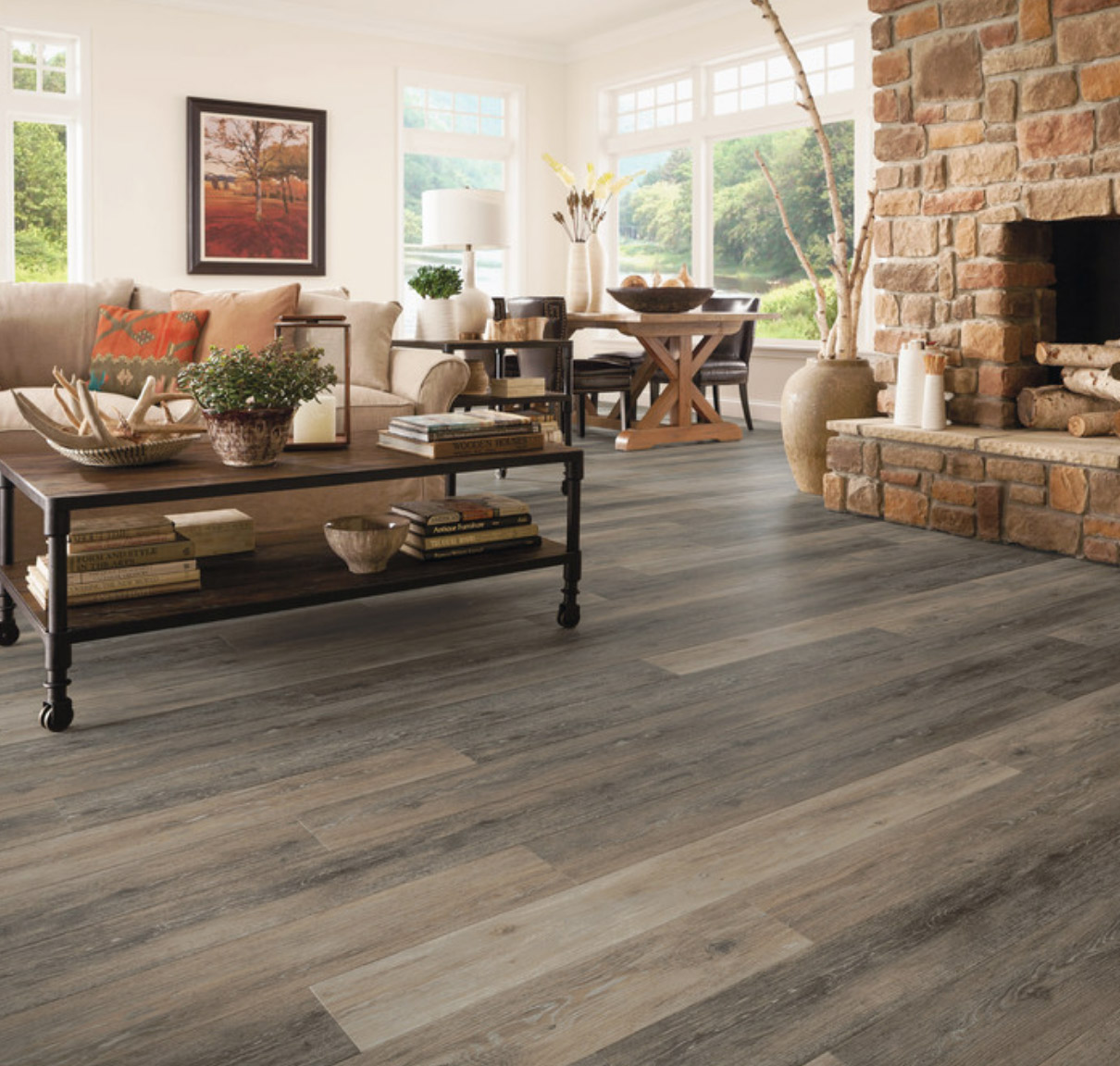
2. Herringbone Patterns
Old patterns like herringbone and chevron are back, adding style and interest to spaces. These designs fit both old and new styles.

3. Chevron Patterns
Chevron vinyl, similar to herringbone, has a sharper look and is trendy for 2025.

4. Mixed Wood Tones and High Variation Designs
Mixed wood tones and high variation designs add depth and character. This trend leans towards more natural and varied styles.
5. Stone-Look Vinyl (Slate, Marble, Travertine)
Vinyl that looks like stone, such as slate, marble, and travertine, offers a fancy look with vinyl’s comfort and price. These styles are great for many rooms.
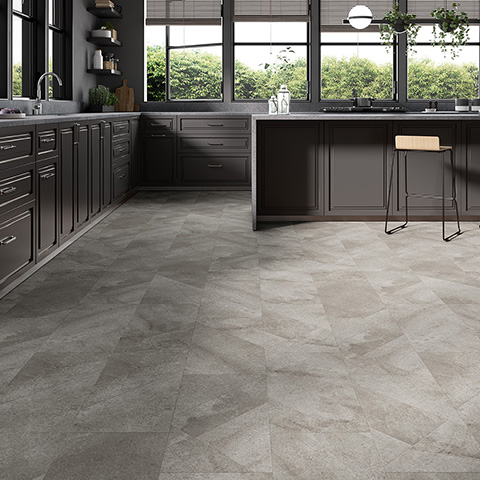
6. Matte Finishes and Low-Sheen Textures
Matte and low-shine finishes are popular because they hide scratches and dirt, giving a neat look that needs less cleaning.
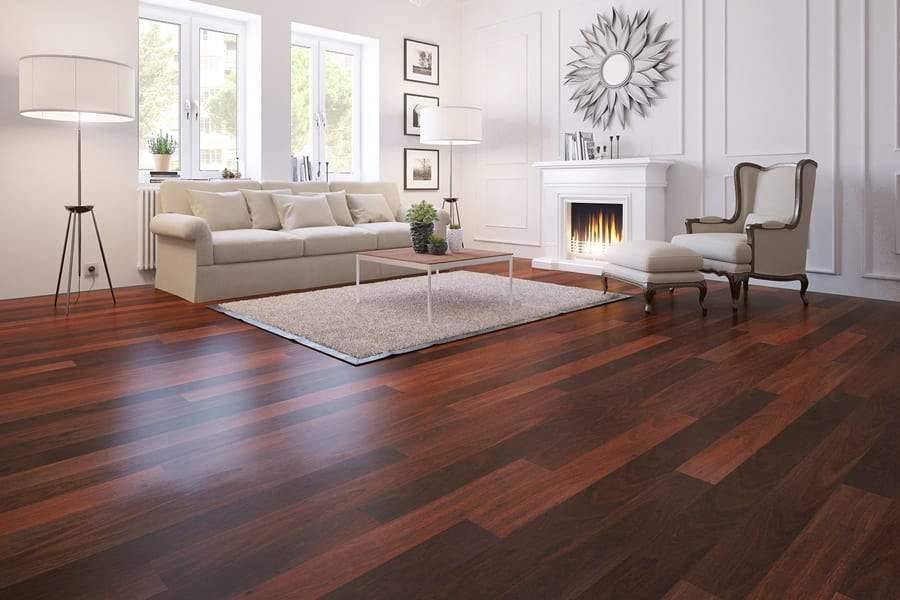
7. Natural Grain Embossing and Registered Finishes
New printing tech makes vinyl look and feel like real wood with detailed textures. This makes wood-look vinyl more real.

8. Seamless Indoor-Outdoor Transitions with Vinyl Tile
Vinyl tiles are used to create a smooth look from inside to outside, perfect for patios and decks, as they are strong and weatherproof.
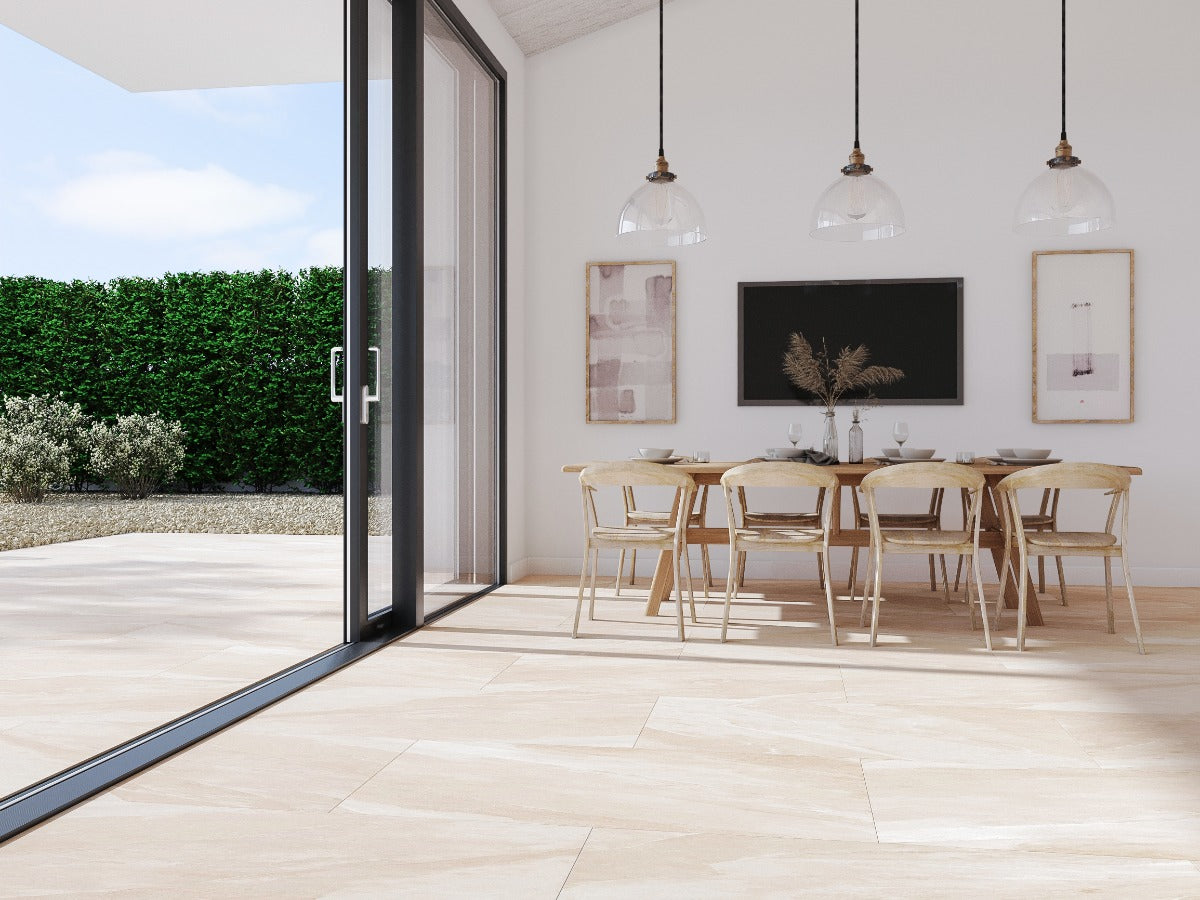
Vinyl Flooring Colors & Finishes Trending Now
In 2025, vinyl flooring colors are going for warm, nature-inspired shades with rich textures. These styles make every room feel cozy and interesting.
🌾 Warm Greige and Honey Oak Tones
Greige vinyl, a mix of grey and beige, looks great with modern and farmhouse styles. Honey oak brings a golden warmth to kitchens and living rooms.

🏖️ Coastal Whitewashed Planks
Light, beachy tones are back in style. Whitewashed vinyl planks make small rooms brighter and create a relaxed feel.

☕ Rich Espresso and Charcoal Tones
For bold looks, dark tones like espresso and charcoal give a sleek style that fits modern designs. They also hide dirt well in busy areas.

🪵 Distressed and Reclaimed Wood Looks
Vinyl with aged textures looks like reclaimed barn wood, great for rustic or industrial styles. It adds character without the upkeep.

🎨 Subtle Pattern Layering for Depth
Vinyl now often has layered designs like soft wood grains or mineral veins. These add richness and movement without being too much.

Best Vinyl Flooring Types by Room
Picking the right vinyl flooring for each room makes it last long and look good.
Kitchens: Waterproof LVP with Slip Resistance
Kitchens get lots of spills and moisture. Waterproof Luxury Vinyl Plank (LVP) with slip-resistant surfaces is strong and safe. It looks like real wood or stone and feels nice to walk on.

Bathrooms: Sheet Vinyl or Rigid Core Vinyl Tiles
Bathrooms need floors that handle water well. Sheet vinyl is smooth and water-resistant, while rigid core vinyl tiles are strong and come in many designs.

Living Rooms: Textured Wood-Look LVP
In living rooms, textured wood-look LVP gives the warm look of wood with vinyl’s strength. It’s great for comfort and style.
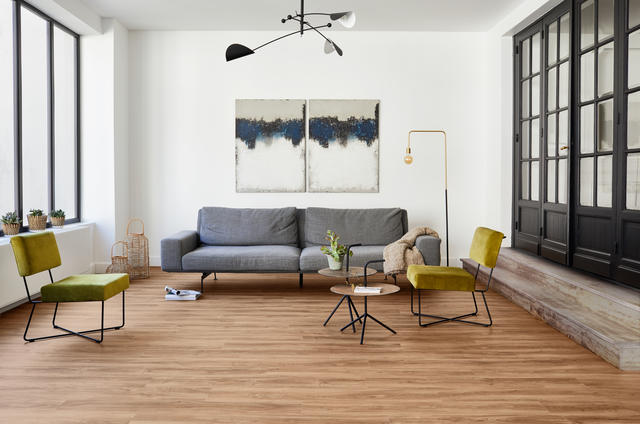
Entryways & Mudrooms: Scratch-Resistant Vinyl Tile
Entryways and mudrooms get lots of foot traffic and dirt. Scratch-resistant vinyl tiles are tough and easy to clean, perfect for these spaces.

Rentals: Peel-and-Stick or Click-Lock Vinyl Planks
For rentals, peel-and-stick or click-lock vinyl planks are easy to put in and take out. They are a cheap option that still looks nice.

Top Reasons to Choose Vinyl Flooring in 2025
Vinyl flooring is still popular in 2025. It’s great for those who want a modern look, long-lasting use, and a good price.
💧 1. Waterproof Strength for Any Room
Vinyl flooring handles spills in the kitchen, bathroom moisture, and basement dampness. Most luxury vinyl plank (LVP) and sheet vinyl are 100% waterproof, ideal for wet areas.
🎨 2. Stylish and Affordable
Vinyl flooring now looks very real like wood, stone, and tile. It offers the fancy look of hardwood or marble without high costs or maintenance.
🛠️ 3. Easy to Install Yourself
Vinyl floors with click-lock or peel-and-stick are easy to install without needing a pro. Perfect for quick home updates or temporary changes.
🦶 4. Soft and Comfy to Walk On
Vinyl flooring is softer than tile or hardwood. It’s cozy for long cooking sessions or for kids playing barefoot, especially with a cushioned layer underneath.
Vinyl Flooring Cost Breakdown (2025 Estimates)
Vinyl flooring is a low-cost choice for stylish, strong floors in 2025. Here’s the cost for popular types:
💲 Vinyl Flooring Cost Per Square Foot (Materials Only)
| Type | Average Price (2025) | Key Benefits |
|---|---|---|
| Sheet Vinyl | $1 – $3 | Seamless, waterproof, soft underfoot |
| Luxury Vinyl Plank (LVP) | $2 – $5 | Wood-look visuals, waterproof, cushioned |
| Luxury Vinyl Tile (LVT) | $2 – $6 | Stone/tile looks, modular design, durable |
| Rigid Core Vinyl (SPC/WPC) | $3 – $7 | Enhanced stability, dent-resistant, waterproof |
| Peel-and-Stick Vinyl | $1 – $2.50 | Easy DIY, renter-friendly, low-cost fix |
| Click-Lock Vinyl Plank | $2 – $4.50 | DIY-friendly, floating floor, easy to replace |
🛠️ DIY vs. Pro Installation Costs
DIY Installation: Many vinyl types are homeowner-friendly, especially click-lock and peel-and-stick. Just buy underlayment and basic tools.
Professional Installation: Costs $2–$5 per sq ft, based on material, subfloor, and room design.
⏳ Longevity & Investment Value
Sheet Vinyl: Lasts 10–15 years (good for low-traffic or cheap spaces)
LVP & Rigid Core: Lasts 15–25 years (great for kitchens, living rooms, and wet places)
Peel-and-Stick: Lasts 5–10 years (best for rentals or short-term fixes)
👉 Want a detailed price chart with pros and cons? See our full Vinyl Flooring Cost Guide
When to DIY vs. Hire a Pro for Vinyl Flooring Installation
Vinyl flooring is popular because many styles are easy to install yourself. However, hiring a pro can save you time and prevent mistakes depending on your space.
Here’s how to know if you should do it yourself or hire a pro:
🏠 DIY Installation: Best for Simple Spaces & Click Systems
Use click-lock vinyl planks or peel-and-stick tiles for square rooms without tricky cuts. These are easy to install, even for beginners, and need basic tools.
Save on labor and work at your own speed, ideal for small updates or budget projects.
🧑🔧 Hire a Pro: Best for Complex Layouts or Permanent Results
Consider hiring a flooring installer if:
You’re working with glue-down vinyl or sheet vinyl
Your floor plan includes angles, curves, or multiple rooms
You need subfloor repair or leveling
You want a warranty-backed, guaranteed result
Professionals have special tools for the best adhesion, cuts, and transitions, leading to a longer-lasting finish.
📊 DIY vs. Pro Installation Comparison
| Factor | DIY Installation | Professional Installation |
|---|---|---|
| Best For | Click-lock, peel-and-stick vinyl | Glue-down vinyl, sheet vinyl, complex layouts |
| Skill Level Required | Beginner to intermediate | None — handled by trained pros |
| Tools Needed | Utility knife, straightedge, mallet | Industrial cutters, rollers, glue tools |
| Prep Work | Homeowner must prep and clean subfloor | Installer handles subfloor leveling |
| Time Commitment | 1–2 days for most rooms | Usually completed in one day |
| Warranty Coverage | Often voided if not installed correctly | Manufacturer warranties typically valid |
| Average Install Cost | $0 (DIY) + tools (~$50–$100) | $2–$5 per square foot labor cost |
✅ Quick Tip
If your vinyl needs glue or precise alignment and you want a perfect finish, consider a pro installer.
👉 Need help with vinyl flooring installation? Check out our full How to Install Vinyl Flooring (DIY Guide) or Book a Free In-Home Consultation with our flooring experts.
Final Tips Before You Buy Vinyl Flooring
Before you order, take a few extra steps to ensure your vinyl flooring looks good and lasts a long time.
📦 Buy Extra for Cuts & Waste
Always purchase 10–15% more vinyl flooring than your room size. This covers cutting, mistakes, and leaves extras for future fixes, especially for patterns like herringbone or large tiles.
💡 Try Samples in Home Lighting
Vinyl can look different in store light compared to your home. Place samples on your floor and watch them during the day in both natural and artificial light. This prevents color surprises after installation.
🛡️ Check Warranties & Wear Layer Specs
Look at the wear layer thickness (in mils) — 12 mil or more is best for busy areas. Also, check the warranty for water damage, fading, and installation mistakes. Some warranties need pro installation to stay valid.
💰 Think About Lifetime Value, Not Just Price
A cheaper floor might look nice at first but wear out quickly. Spend a bit more on rigid core LVP or top brands for 15–25 years of easy maintenance and durability. It’s a smart investment that saves money over time.
Need Help Choosing or Installing Your Vinyl Flooring?
You’ve learned about the latest vinyl flooring trends, materials, and costs. You’re now closer to adding beautiful, strong floors to your home. If you want to avoid the hassle, our expert team can assist you.
We take care of everything—from checking subfloors and planning layouts to the exact installation of luxury vinyl plank, sheet vinyl, vinyl flooring stairs, vinyl floor tiles and more.
We’ll help you pick the right vinyl style and format for your room, budget, and lifestyle—whether it’s for a busy kitchen, bathroom, or rental space.
Click here to contact us today and schedule your free in-home consultation to see if we serve your area!





